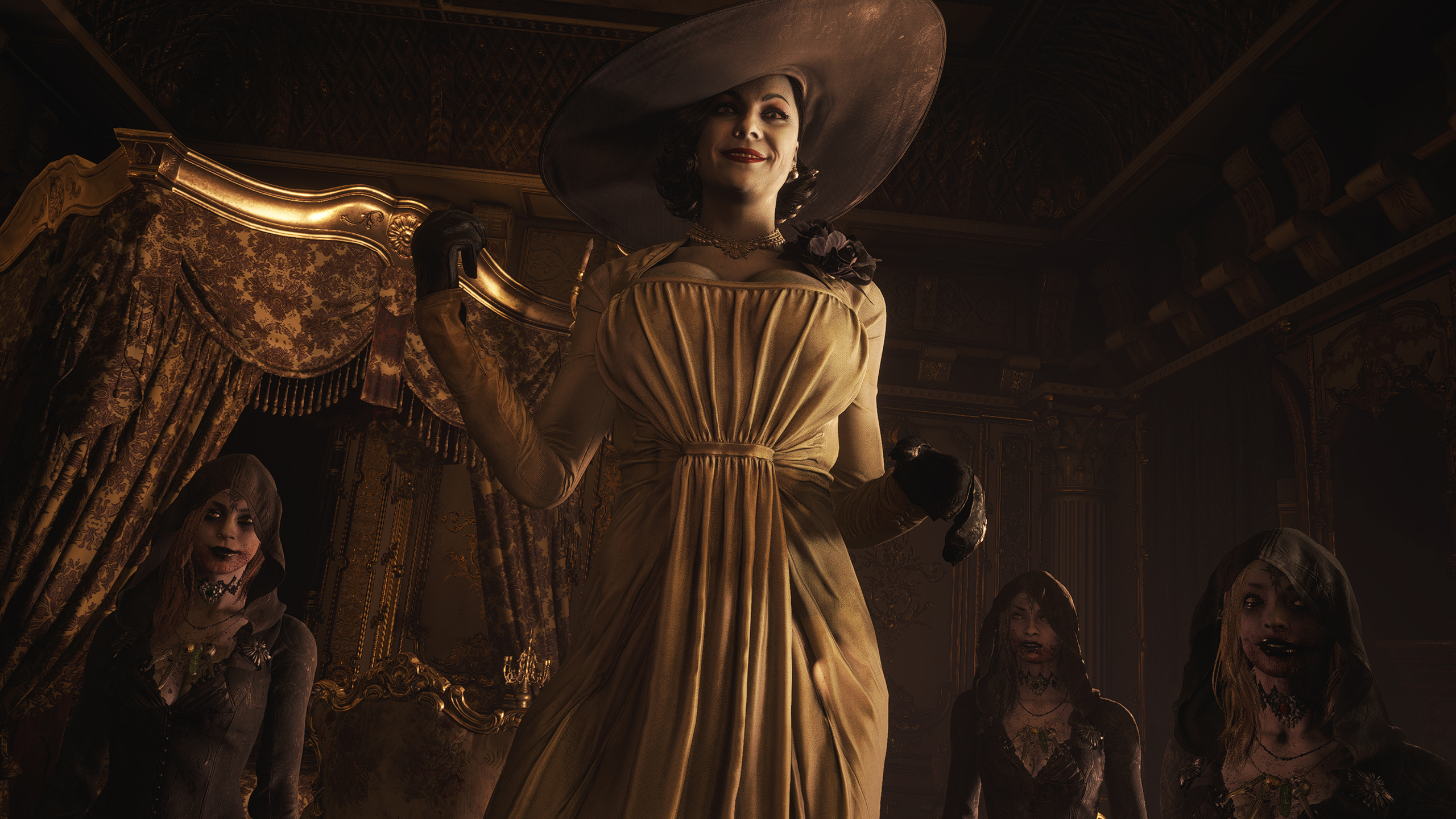Our Verdict
A grimly beautiful collection of killer horror set-pieces, with some of the most memorably grotesque enemies in Resi history.
PC Gamer's got your back
What is it? A first-person survival horror game.
Expect to pay £50/$60
Developer Capcom
Publisher In-house
Reviewed on RTX 2080 Super, Intel i7-9700K, 16GB RAM
Multiplayer Being added later
Link Official site
Resident Evil Village begins with a scene of domestic bliss, as our hero Ethan Winters (returning from Resident Evil 7) and his wife Mia prepare dinner and look after their newborn baby, Rosemary. Then something bad happens—I won't say what, because it's pretty shocking—and soon Ethan finds himself lost in an isolated village in a snowstorm, searching for his kidnapped child. It's a sharp, sudden intro, but an effective one, immediately setting the stakes high and establishing Village's brutal, sadistic tone.
It's never explicitly stated where the village the game takes its name from is located, but a few clues point towards it being nestled somewhere in the wintry mountains of Romania. The village itself is a scrappy, ramshackle scattering of wood and brick houses, farmer's fields, and the occasional church. Over it looms a gothic castle with immense spires stretching into the mist, and there are also traces of ancient ruins, suggesting a long and strange history. It's a magnificent setting, dripping with atmosphere, menace, and mystery—and a place I wanted to explore every dark, dingy corner of.
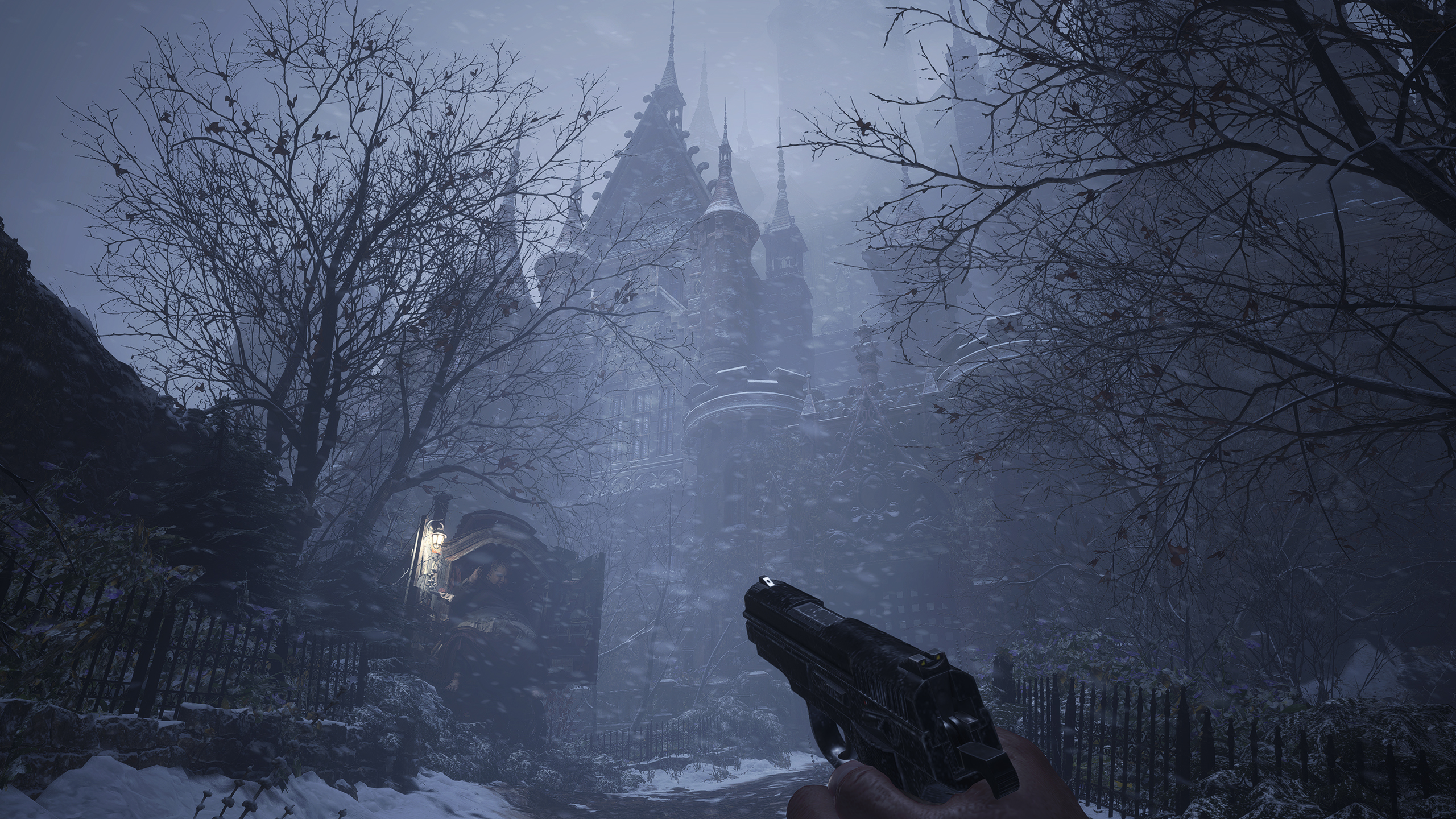
Ethan is a boring guy who always seems confused about what's going on, and never has anything interesting to say. This makes him a slightly unremarkable protagonist, but his extreme normality does heighten the eccentricity of the village's many oddball residents. The previous game's Baker family were a relatively grounded bunch of ghouls, but here Capcom has seriously ramped up the monstrousness of its antagonists. As Ethan hunts for Rose, he goes up against an impossibly tall and glamorous vampire, a weird mutant fish-man, a killer porcelain doll, and other assorted weirdos.
What I love about Village is that it never settles on being just one kind of horror game. Each villain's lair features a very different take on the genre, from breathless, action-packed survival against hordes of enemies, to a more slow-burning, psychological brand of horror. It's a game overflowing with cool, memorable ideas, constantly inventing clever, surprising new ways to raise your heart rate and jolt you out of your comfort zone. And it manages to keep this up for pretty much the entire duration of the game.
What I love about Village is that it never settles on being just one kind of horror game
Each section is so wildly different, Village almost has the feel of a horror anthology. Admittedly, this can make it feel inconsistent at times, as if all the parts are flimsily strung together. You often get the sense that Capcom had the ideas for the game's many brilliant set-pieces first, then decided how to connect them all together at the last minute. But it's worth it for the variety this approach offers. You genuinely never know what fresh weirdness the developer is going to throw at you next.
This not only makes this the most varied Resident Evil to date, but arguably the scariest. One of the best examples of this is the mansion of Donna Beneviento, a dollmaker and one of the village's rulers. In her creaking, dusty old house—which is littered with dozens of eerie, black-eyed dolls in various states of disrepair—you're forced through a series of brilliantly constructed moments of understated, excruciatingly tense horror, culminating in an encounter that might well be the scariest single moment in Resident Evil history.
In another section you're hunted by Lady Dimitrescu, the aforementioned lofty vampire. Her 15th Century castle is an opulent labyrinth of ornate, gilded corridors and shadowy drawing rooms, lavishly decorated and softly lit by candles. It's an incredibly atmospheric setting, and the imposing Lady D bearing down on you (crouching to squeeze through doorways that are much too small for her) is thrillingly nerve-wracking. As she pursues, you have to hunt for objects to unlock the main gate, which involves some light puzzling and, in true Resi style, mentally mapping the building.
Castle Dimitrescu is perhaps the best showcase of Resident Evil's impressive visuals—but the entire game is just obscenely pretty. The environments are richly detailed and stunningly lit, with a tangible layer of grime and texture to every object and surface. It runs smoothly, even at high resolutions, and raytracing makes for some gorgeous lighting and reflections. The character models are also spectacular, with expressive, convincing animation bringing the cast horribly to life. The English voice acting is a little hammy, but for the most part this suits these absurd, egomaniacal characters.
The castle and dollmaker's mansion are among the series' most memorable set-pieces. But I do wish they had squeezed more out of some of them. In one sense, I do appreciate how Capcom resists the urge to milk its ideas dry, enthusiastically tossing them aside to present something new to the player. This keeps things feeling fresh and unpredictable throughout. But occasionally I'd reach the end of one of these sequences and think "Is that it?" Sometimes I just wish the game would give me more time to soak it all in before shoving me through to the next room of the haunted house.
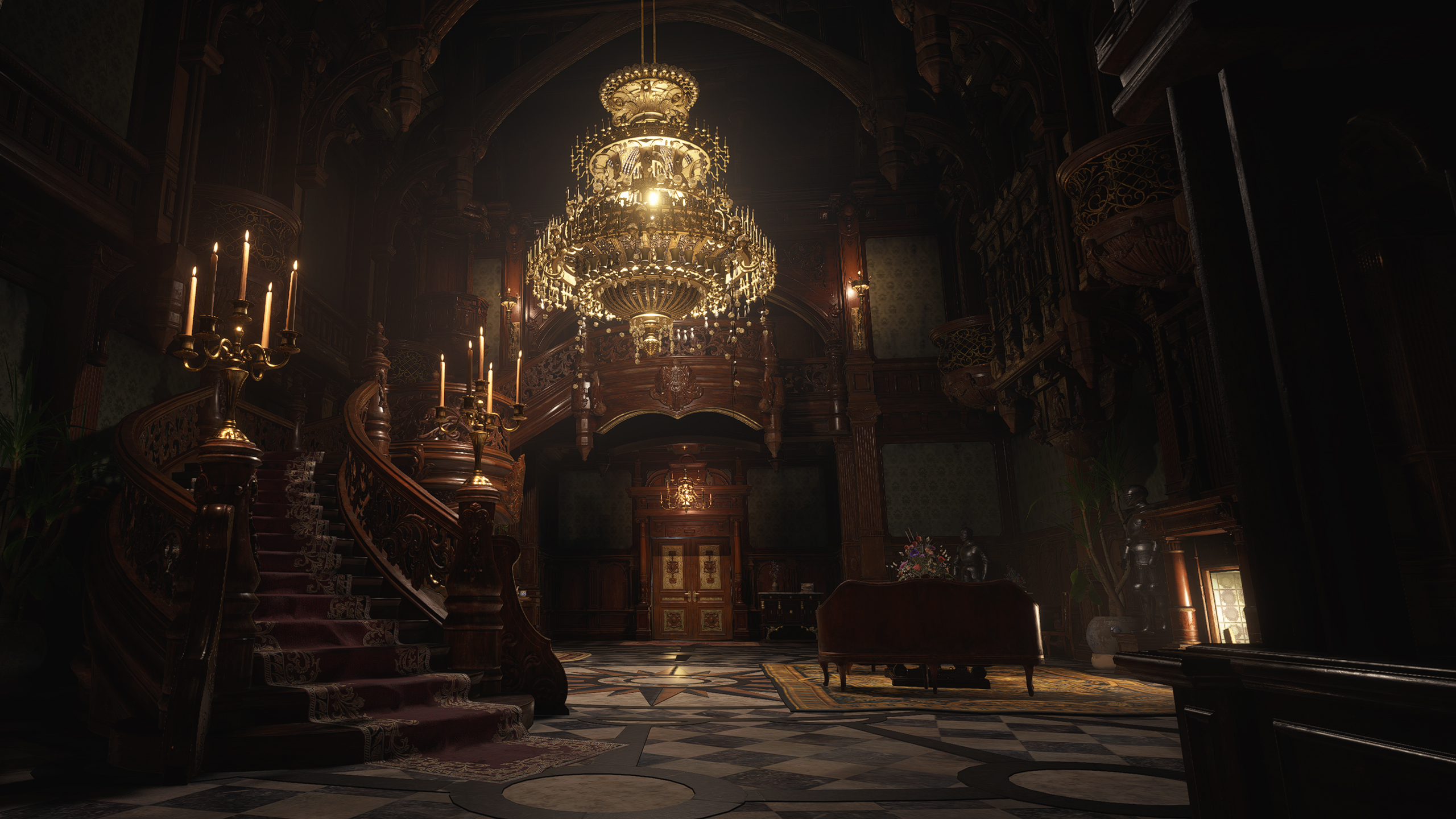
Elsewhere, the horror is more immediate. While Resident Evil 7 had one type of regular enemy—the sludge-like Molded—Village features an array of savage horrors called Lycans. These feral, snarling creatures come in various forms, and you have to regularly switch up your tactics to fight them. The standard grunt Lycan isn't overly powerful, but they're agile and athletic, able to leap at you suddenly from a distance and clamber up walls and ladders, which makes for some entertainingly dramatic, fast-paced battles.
I found the regular Lycans too cartoonishly werewolf-like to really be scared by them, but later iterations are much more intimidating. There are some really messed up creatures in the latter half of Village, including twitching biomechanical horrors with drills for arms, guys with chunks of rusty metal screwed to them as makeshift armour, and other similarly grim examples of Clive Barker-esque body horror. It makes those sentient blobs of black slime from RE7 seem very lame in comparison.
There are some really messed up creatures in the latter half of Village
While much of Village takes place in tight, narrow spaces, it sometimes opens up into larger arenas built with combat in mind. Here you'll find explosive barrels to lure groups of enemies towards, roofs to climb, houses to slip into, and furniture to drag across doorways to stem the flow of Lycans. These sections are enjoyably frantic, but are less interesting than the moments when you don't have to fire your weapon much, or at all. Village is a decent first-person shooter, but whenever Capcom focuses on atmosphere and tension over action, it's a better game.
However, the developer seems to have almost entirely lost interest in puzzles. There are a few in Village, but they're extremely easy, with solutions that are always staring you right in the face. As someone who has always enjoyed the arcane, convoluted puzzles in Resident Evil games, I find this slightly disappointing. It does make for a pacier game, with fewer interruptions to the flow of exploration and combat. But I like those interruptions, and I feel like Village could have benefited from being a little more cerebrally taxing. I didn't get stuck once in the 11 hours it took me to finish it.
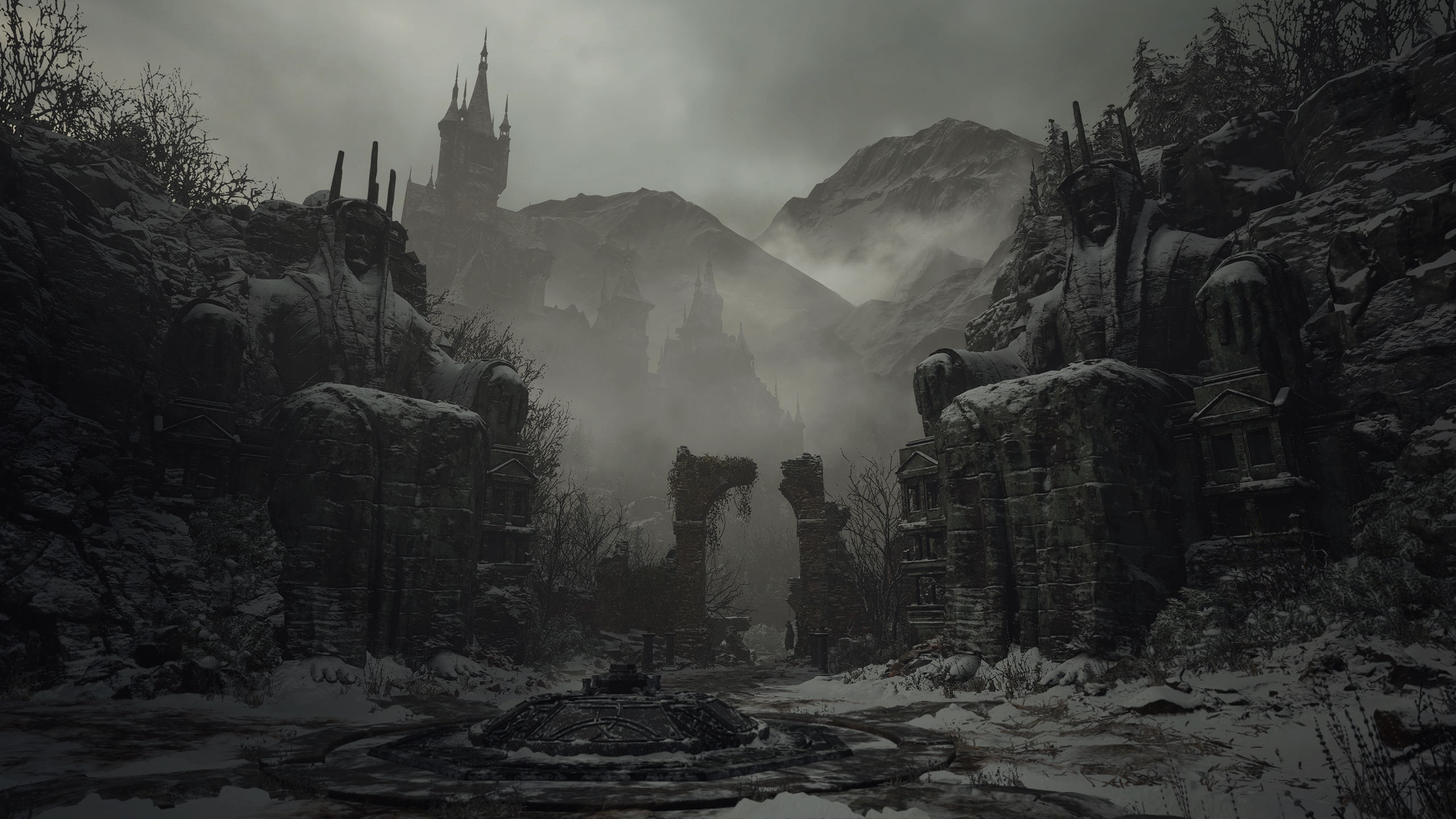
Ethan has very few allies in the village, and they tend to die horribly not long after meeting him. But a mysterious character known as The Duke is a constant friendly presence. He's a merchant with a curiously enigmatic personality, and always seems to be one step ahead of you. Turn a corner in a new area and you'll find him there, quietly puffing on a cigar, eagerly awaiting your coin. He sells weapons, ammo, crafting blueprints, and other helpful stuff, and will buy any treasure you happen to pick up—including the crystalised remains of bosses, which always fetch a tidy price.
The Duke can also upgrade weapons and turn raw ingredients into meals that permanently increase your health, defence, and movement speed. As you explore the village you'll encounter a range of wildlife including pigs, sheep, chickens, and the occasional fish splashing around in a stream. Shoot them and they'll drop meat, which The Duke can then use to whip up one of these tasty stat-boosting feasts. This is one of several optional quests and distractions, which help Village feel slightly less linear than the last game, even if the story does follow a strictly prescribed path.
Running into The Duke gives me the same feeling of relief I get when I find a safe room in the old Resident Evil games. It's a chance to breathe, regroup, tidy up your cluttered inventory, and save at the nearby typewriter. Yes, typewriters are back, but you don't need ink ribbons to use them. Inventory management is an important consideration in Village, but limited to weapons, ammunition, and health items. There are no magic item boxes in this game, so if a weapon or some other bulky object is taking up too much space, you'll either have to sell it or pay to increase the size of your inventory.
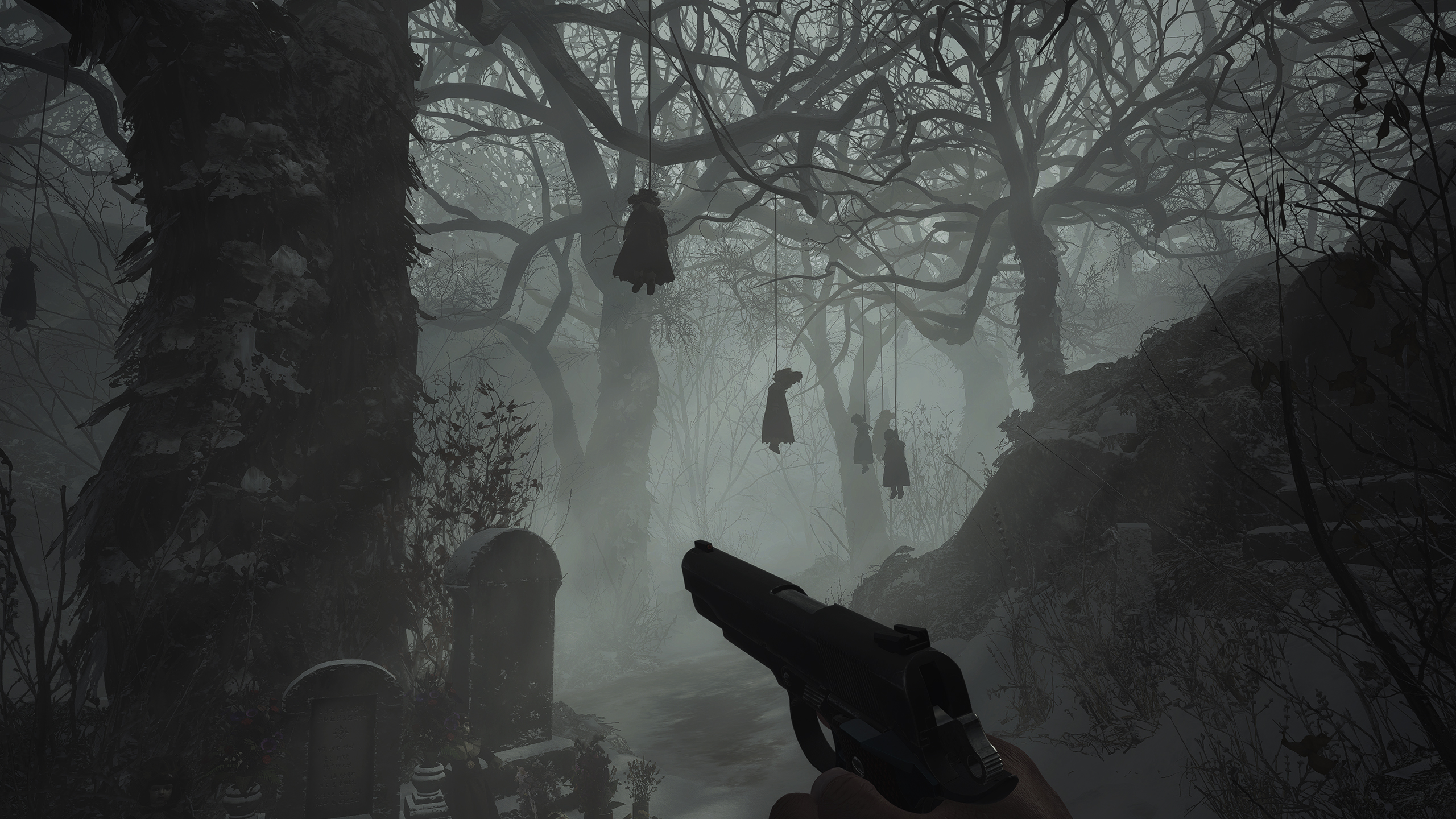
Important items like door keys and objects needed to solve puzzles don't take up any inventory space, and are stored in a separate, bottomless menu—which is one major way Village streamlines the classic Resident Evil formula. Treasure doesn't take up any inventory space either, so you can carry around as many crystal skulls as you like. I must admit, I miss the old system, where picking up a key might mean sacrificing a weapon or some other helpful item. But it does mean less time spent in menus or backtracking to find item boxes, which, again, increases the overall pace of the game.
Compared to RE7, Village has a much more interesting structure. A large, open square in the centre of the village acts as a hub, from which all the major locations in the game branch off, locked by a series of keys. This is a safe zone, similar to the main hall of RE2's police station, and you revisit it frequently. Here you get easy access to The Duke, as well as the entrances to each villain's lair. The village is also hiding several optional areas, which contain extra story details, rare treasure, and minibosses. This rewards you for taking the time to wander off the beaten path and explore.
Although Resident Evil 7 had the feel of a soft reboot, only lightly touching on the series' larger mythology, Village contains some major revelations that impact every game in the series in hindsight. If you're a fan of these stories and you feel like the last few games have been light on new information about this universe and characters, Village will not disappoint. But the important thing is that it's not one of those Resi sequels that bombards you with dumb new lore. These revelations are big and important, but sit quietly in the background, letting Ethan's story stand on its own.
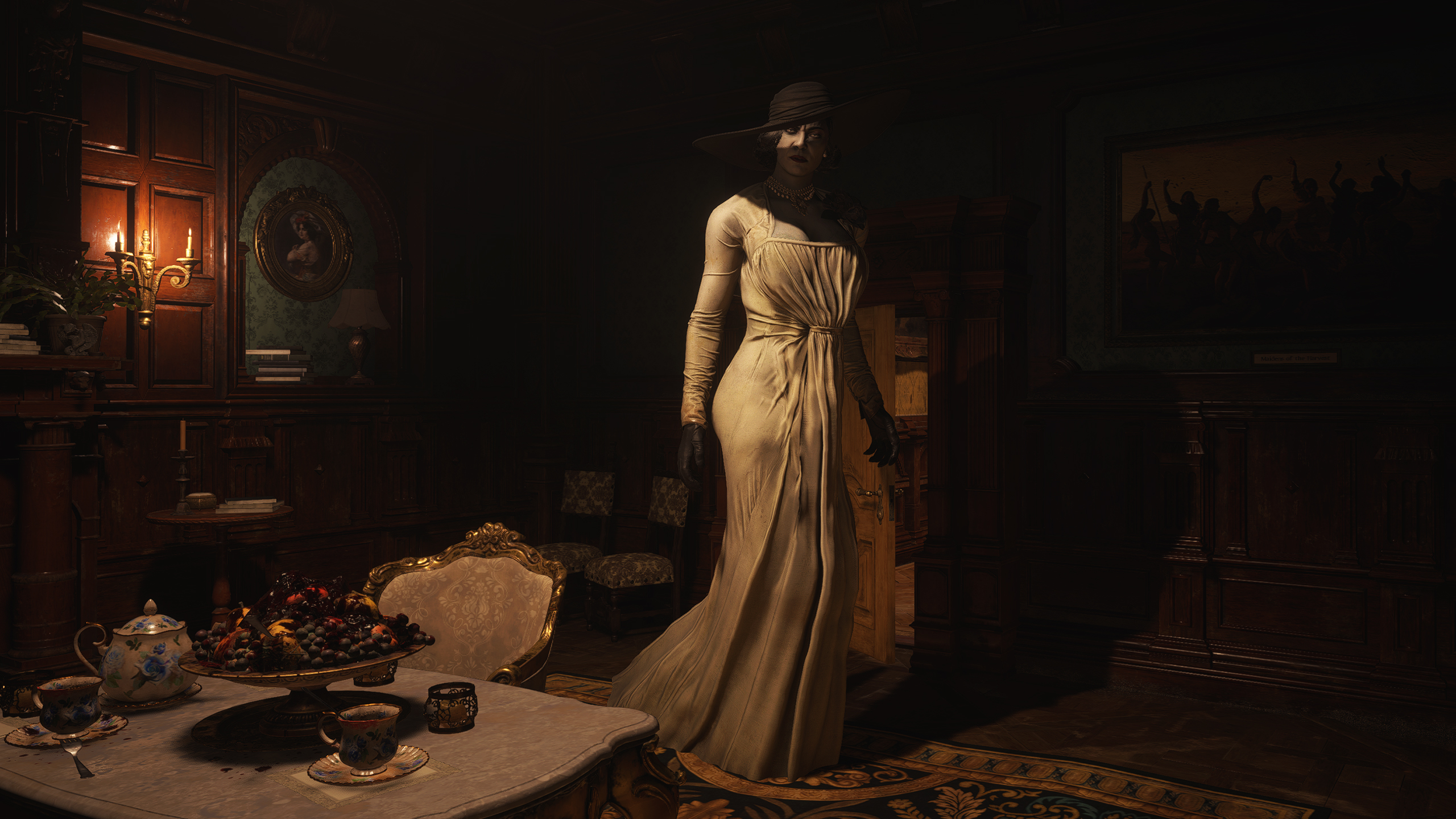
Finishing the story unlocks a store where you can purchase a selection of extras with an in-game currency earned by unlocking achievements. These include a return of The Mercenaries, a fan favourite arcade/time attack mode. In Village's take on it, you can buy items and weapons from The Duke between rounds. But otherwise it remains faithful to the mode popularised by Resi 4. There's a New Game+ mode too, which lets you carry your weapons and character upgrades over to a second, harder playthrough.
Village can occasionally feel like half a dozen different horror games jammed together. But the strength and variety of its ideas, the quality of the art direction, and its darkly evocative atmosphere more than make up for it. It's a bold and experimental horror game, but also one that leans into the series' past glories—particularly Resident Evil 4. There's a lot of Mikami's 2005 reinvention here, from the enigmatic merchant and weapon upgrades, to the rural setting and corrupted villagers. But ultimately, Village is its own game with its own identity, and the elements it borrows from earlier sequels never define it. This is a quality horror game in its own right, and proof Resident Evil still has the power to thrill, surprise, and scare 25 years on.
A grimly beautiful collection of killer horror set-pieces, with some of the most memorably grotesque enemies in Resi history.
If it’s set in space, Andy will probably write about it. He loves sci-fi, adventure games, taking screenshots, Twin Peaks, weird sims, Alien: Isolation, and anything with a good story.
